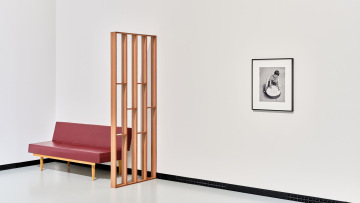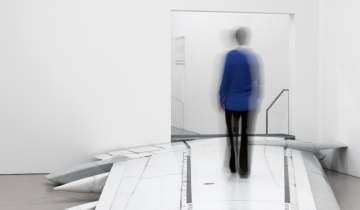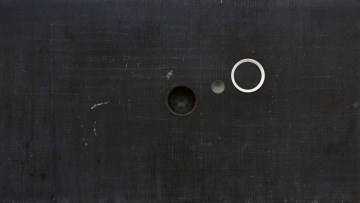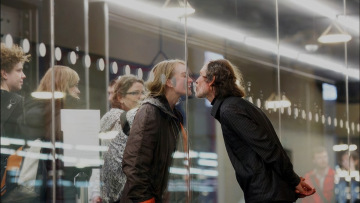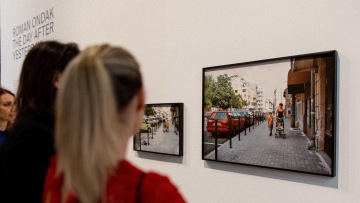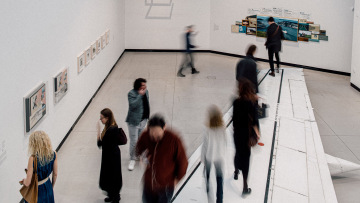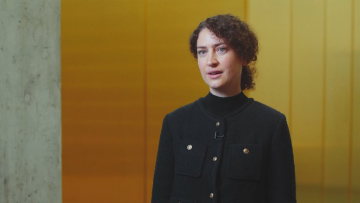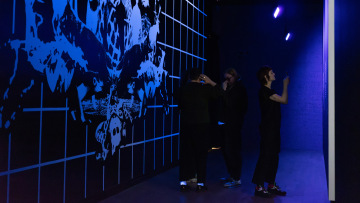Ondak first captured international attention with his project LOOP at the Czech and Slovak Pavilion of the 2009 Venice Biennale. Since then, he has developed a distinctive body of work rooted in the legacy of 1960s and 1970s conceptualism. His approach is characterized by the use of everyday objects and situations, transformed through subtle interventions into poetic reflections on time, memory, and identity. In his artistic practice, the ordinary becomes extraordinary, revealing hidden tensions and oscillations between opposites.
„Ondak’s art is a layered, ambivalent whole that can be viewed from multiple angles and interpreted in various ways all at once. At the same time, it is also highly authentic and accessible to different types of viewers. The most important factor for reading Ondak’s works is his own personal life, which in many cases is mixed with the historical, the political, and the economic or existential. The poetic and slightly melancholic quality of his works does not convey any particular point of view but rather teaches us to observe the world around us,“ says Barbora Ropkova, exhibition curator and collection curator at Kunsthalle Praha.
The title of the exhibition refers to Ondak’s 2005 work The Day After Yesterday, in which he intertwined different temporal layers and balanced the personal with the conceptual. Across installations, performances, videos, photographs, drawings, and objects, the exhibition highlights his recurring themes of memory, time, and identity. Ondak often reflects on the historical particularities of Central Europe and its communist past, while also engaging with the globalized present. His subtle humour and conceptual precision allow existential and societal themes to merge seamlessly with personal experience. In his artistic universe, the political and the personal, the universal and the intimate, intertwine into authentic works that resonate across time and place.
The exhibition also marks Ondak’s long-awaited return to Prague after more than two decades. He exhibited here several times in the late 1990s and early 2000s, and this new presentation reconnects him with a city that has played an important role in his artistic journey as a stepping-stone towards the international art world.
Among the highlights of the exhibition is do not walk outside this area, a monumental readymade created from the wing of a Boeing 737-500, which invites visitors to step onto the sculpture and experience the gallery from an unexpected perspective. Works such as The Joys of an Iron Curtain Trip to the Black Sea and Bad News Is a Thing of the Past Now reflect on Central Europe’s communist past, interweaving personal biography with collective memory. In Freed Doorway, Ondak re-situates the door from his childhood bedroom, while Resting Corner consist of socialist-era furniture, creating an environment that can be used by the visitors.
In Gallery 2, visitors encounter the iconic participatory performance Measuring the Universe, which unfolds only through audience involvement, and Event Horizon, a daily-growing installation made of tree discs marked with world events spanning a century. Escape Circuit explores the illusion of freedom through interconnected cages, while video works like The Stray Man highlight Ondak’s interest in the subtle choreography of everyday life.
In the Box, installations such as Eclipse, from the Kunsthalle Praha collection and Life on Mars turn to the cosmos as a metaphor for our existence, suggesting the continuous oscillation between the microcosm of daily life and the vastness of the universe. Together, these works demonstrate Ondak’s ability to weave history, memory, and personal experience into a poetic yet critical reflection on the world we inhabit.
Perfect Society, an installation of industrial pipes evoking both utopian ideals and dystopian collapse, belongs to the art collection of Kunsthalle Praha, underscoring the institution’s commitment to supporting contemporary artists. Works from the collection are regularly integrated into Kunsthalle Praha’s exhibition programme, situating Ondak’s practice within the institution’s broader narrative.


